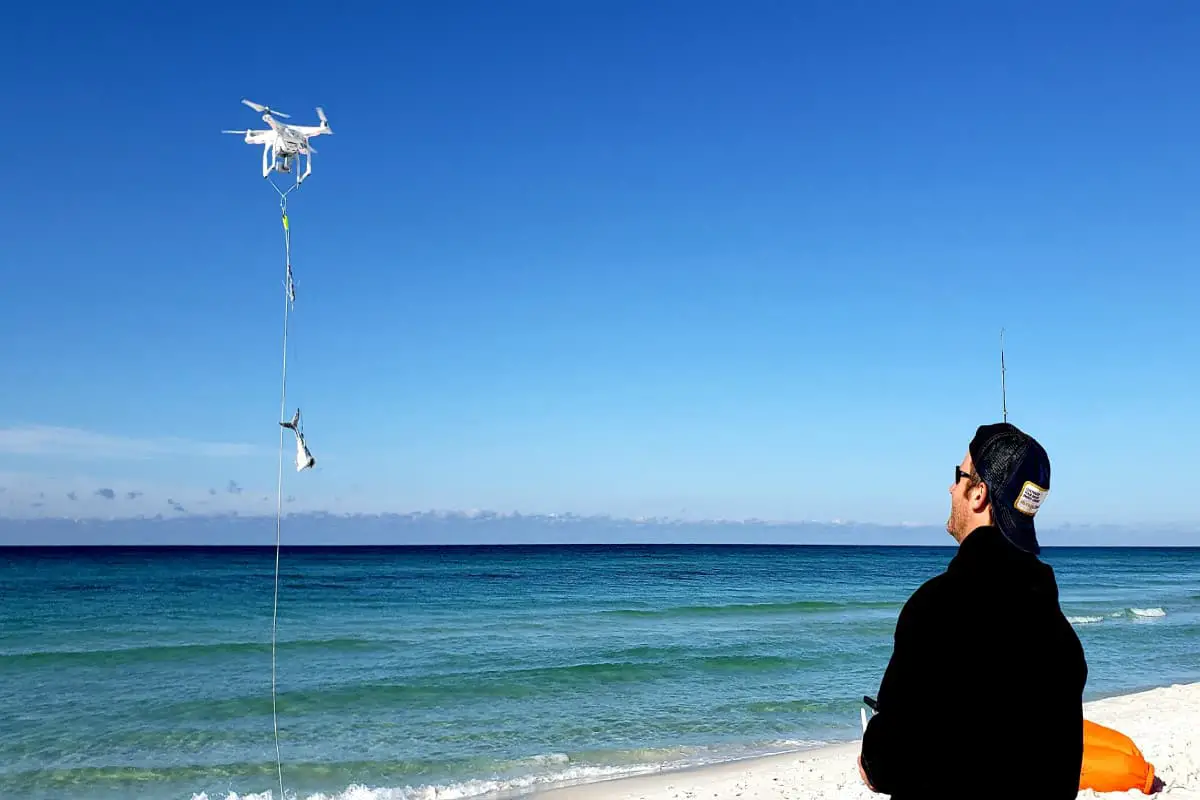While the technology behind drones has been around for some time, recently, individuals have begun using these machines for new purposes. One unique way that many have begun using drones is surf fishing, which is a modern approach to a classic sport.
Some traditional anglers may question the validity of drone fishing, but those who have tried it are often “hooked” from the start. Is surf fishing with a drone legal in California?
Currently, there is nothing present in the Fish and Game Code or the California Code of Regulations restricting the use of drones to move your terminal gear to places far beyond your casting ability. While the use of drones isn’t necessarily regulated when it comes to surf fishing, you’d still need to obey all the laws regarding drone use in your area, including the restrictions on where you can fly them.
[toc]
If you have scoured the internet for information on drone surf fishing, you have probably noticed that information is not overly abundant at this time.
We will discuss everything you need to know about drone fishing in California. We will break down what drone fishing is, the laws regarding general drone use, benefits of drone fishing, and much more.
Current Drone Laws in California
Before you jump into the world of drone fishing, you must know the laws concerning drone use in California.
While there are no concrete laws towards fishing with your drone, there are several laws when it comes to using drones in general.
Even if you are using your drone primarily over water, you can get in trouble if you are not following the regulations correctly.
First, make sure that you can fly the drone in the area you want to fish. The current locations that allow drones are:
- State parks
- State beaches
- State historic parks
- State recreational areas
- State vehicular areas (Unless prohibited by a District Superintendent posted to order)
There are times when drones are not permitted even in the places listed above. Make a note to look for any postings that do not allow drones in the area.
If you are ever unsure or you want to double-check, you can ask the local State Park District.
Some reasons that drone flights may be restricted commonly permitted areas are:
- Protection of threatened species
- Threats to cultural and natural resources
- High fire risk
- Public safety concerns
- Recreational conflicts
- Impacts on other visitor’s experience and privacy
Recreational Drone Use in California
Before operating your drone in any local State Park, it is recommended that you check with your district and ensure that there are no posted orders that prohibit the use of drones.
It is important to note that even if nothing is posted, an official can ask you to stop using your drone for various reasons, and you are required to abide by this.
If it is found that you are flying the drone in a reckless manner that may be harmful to others or yourself, you can be asked to stop, and the drone can be removed from park boundaries.
The FAA Guidelines for Flying Drones State That You:
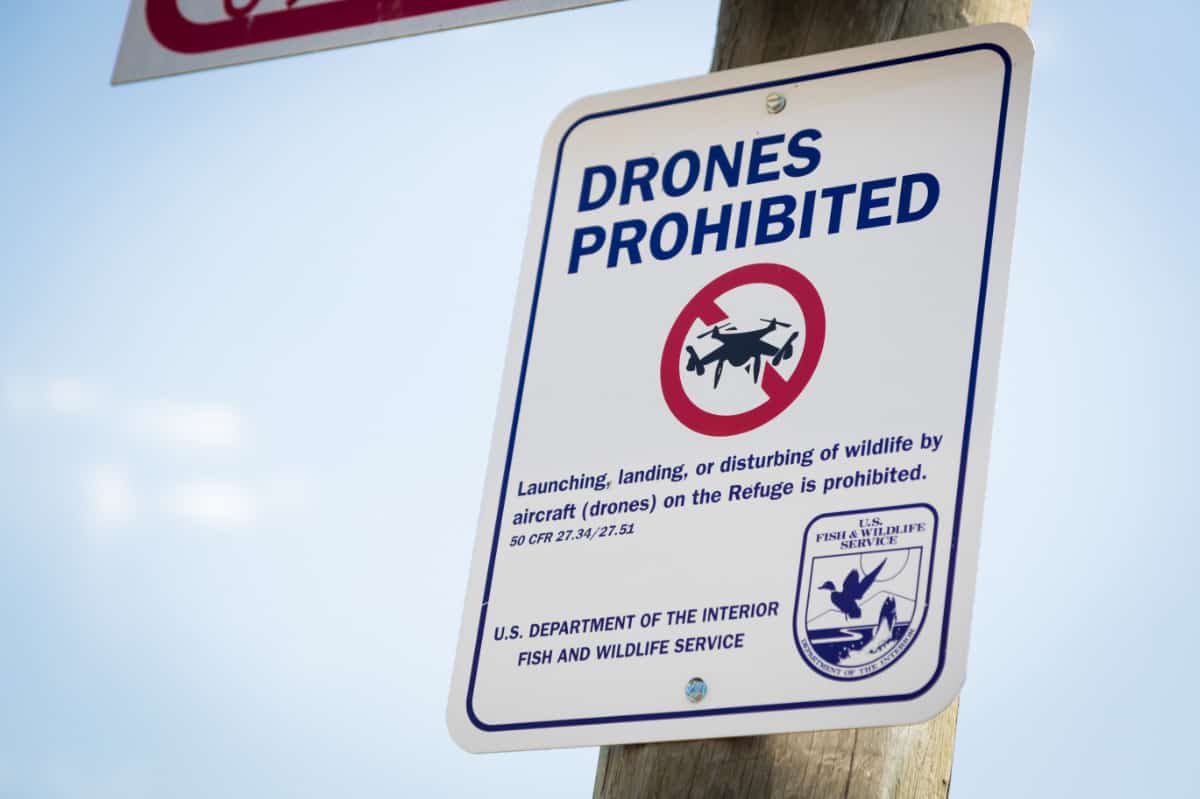
- can’t fly drones above 400 feet and must remain clear of surrounding obstacles
- must keep the aircraft within visual line of sight at all times
- must stay well clear of, and do not interfere with crewed aircraft operations
- cannot fly within 5 miles vicinity of an airport unless you have contacted the airport and the control tower prior
- must avoid flying near people, or stadiums
- cannot fly a drone while under the influence of drugs or alcohol
- cannot fly an aircraft weighing over 55 pounds
- cannot fly a drone near or over sensitive infrastructure or property. Examples of this are; power stations, water treatment facilities, correctional facilities, heavy roadways, etc.
- cannot fly the drone carelessly or recklessly, or you could be fined for endangering people and other aircrafts
- cannot conduct surveillance or photograph individuals in areas where there is an expectation to privacy or without permission from the individuals
There are separate drone regulations for commercial aircraft, research drones, and public agency drones.
To learn more about these stipulations and ensure you are following all rules laid out by the state, you can reference this site.
Current Drone Fishing Regulations
You may have noticed in this list of regulations that there is little mentioned about drone fishing in particular.
At this time, drone fishing is still relatively new, and there has yet to be specific regulations towards the sport put in place in California.
These rules may change over time, and this is something you will want to regularly check to ensure there have not been any new laws enacted.
At this time, several states do have regulations in place that limit the ability to drone fish in certain areas. Though the California Department of Fish and Wildlife ![]() has yet to put any rules in place, some states have prohibited this style of fishing.
has yet to put any rules in place, some states have prohibited this style of fishing.
It is expected that California will release laws in this area in upcoming years as the sport of fishing is being changed drastically due to this new technology, and these methods will only continue to become more regularly used.
The Meaning of Drone Fishing
Drone fishing itself is relatively self-explanatory; it is fishing with the assistance of a drone.
Drones allow anglers to fish in areas that are usually unreachable because they can fly over the water to previously inaccessible areas.
While you can use boats to reach most areas, they still have limitations that drones are not subject to.
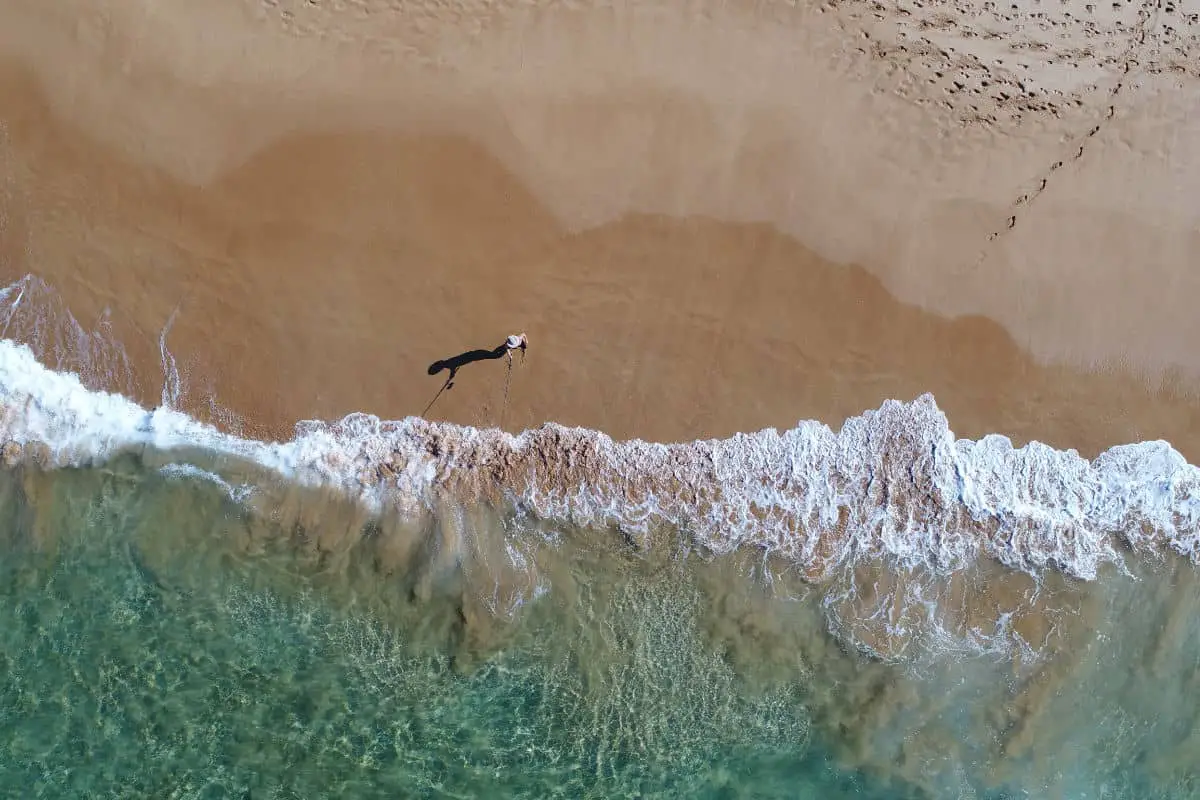
Many use drones to hold bait on the surface of the water, attracting fish. One unique benefit of this is that most drones feature built-in cameras ![]() that can capture incredible images of the fish you are catching.
that can capture incredible images of the fish you are catching.
You can also use the drone to scope out new areas that you are not familiar with and fish areas that you usually cannot see or reach.
Drones can cover a large area that would not be realistic for most anglers to do without drone assistance.
With a drone, you can examine local topography and locate fish you may have normally missed when fishing on land or in a boat.
The Negative Connotations Associated with Drone Fishing
You may be questioning why many states have been putting regulations on drone fishing or even prohibiting it.
While California has yet to limit your fishing capabilities, several individuals view this style of fishing as too easy or have a negative view of drone fishing.
This is a common issue when new technology is released, as many find it hard to stray from the classic methods.
Is Surf Fishing with a Drone Consider Cheating?
Some people believe that drone fishing is a form of cheating as these devices can enter areas that many humans cannot or have capabilities that average anglers do not possess.
Flying your drone over water is not illegal and is something that many have been doing for years.
The main misconception here is that drone fishing doesn’t require a high level of skill; in reality, these skills simply differ from those of a traditional rod and reel fishing, but catching fish with a drone still requires a great deal of expertise and knowledge.
The key is to view the drone as a tool; in many ways, it is no different than using a boat or other method of reaching deep water. A drone is a piece of technology like a boat, or a rod and a reel.
While the drone can take your bait and line out into deeper waters, it does not guarantee that you will catch larger fish.
If you have been traditional surf fishing for some time, adding a drone to assist you can be an excellent way to change things up and reach new fish habitats.
The only time that drone fishing may be considered cheating or should be looked at negatively is if you are competition fishing and the devices are not allowed.
Drones are something you would need to ensure you are allowed to use during any competition.
It is also crucial to remember that there is a slight learning curve that comes with drone fishing, and you should give yourself adequate practice with these methods, or you could lose your new piece of kit in the water.
Advantages of Drone Fishing vs. Boat Fishing
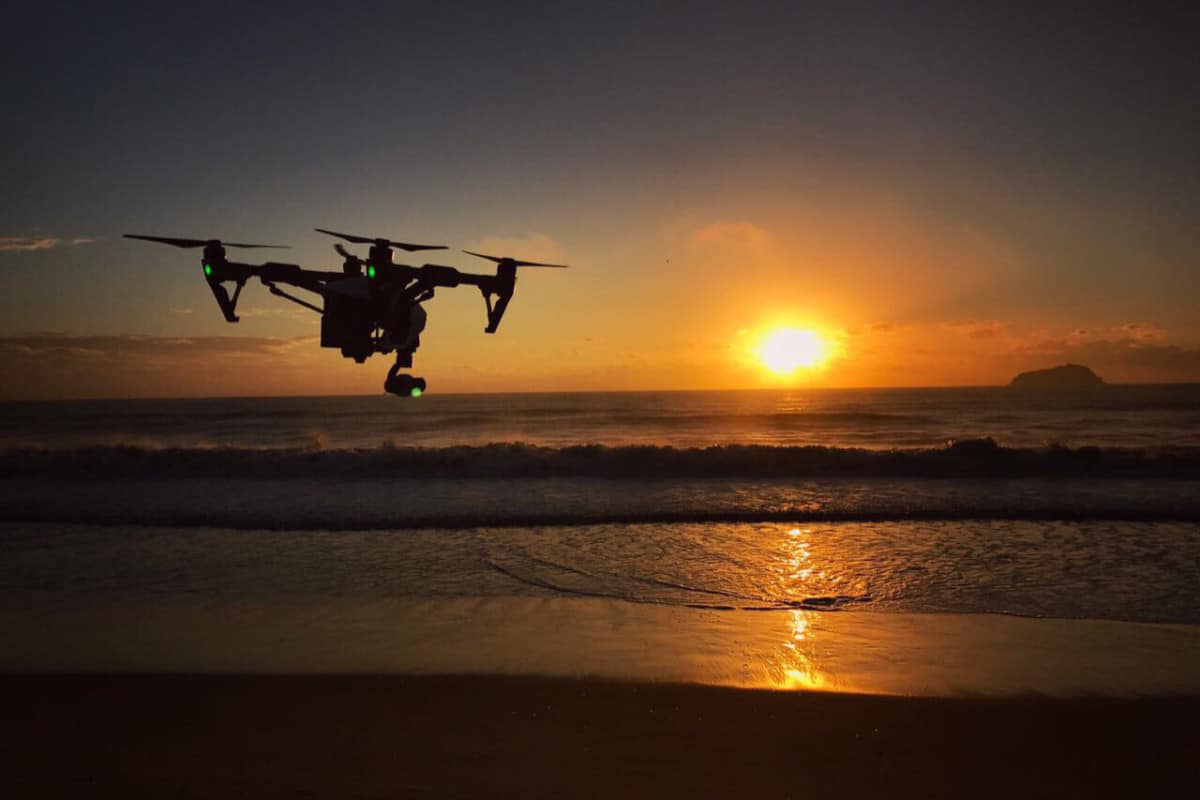
Of course, before you dive into buying a drone for yourself, you want to learn more about the benefits of using the devices.
In essence, fishers have two choices if they’re going to catch fish in deeper water; they can either buy a drone or a boat.
Most boats are far more expensive than drones, but drones do have some negatives that you must consider as well.
Here are some considerations for those looking to get into drone fishing:
#1: Do Drones Perform Better than Fish Finders?
While fishing off of a boat, you might already be used to using a fish finder. While fish finders are undoubtedly helpful tools, you’ll only get a small picture of the specific area of the water that you’re on.
So, you won’t get a lot of coverage or a great overall view with a fish finder.
On top of that, you’d also need a boat with which to use the fish finder. Compare that to fishing with a drone, and you’ll realize right away that a drone can help you get a much broader and more comprehensive perspective.
#2 Drones Provide a Preview
With a drone’s camera, you’ll be able to preview certain parts of the water before you decide to fly your drone out there with a line and bait.
This allows you to scout many areas more effectively than you could on land or in a boat.
You can also use the GPS location system on the drone so that you can find the point you want to drop bait over later.
With a drone, you’ll be able to plan more effectively so that you know what areas you want to fish in on for that day.
#3 Easier Long-Distance Casting
Previously, you had to use a kayak if you wanted to make a long-distance cast into the surf. However, a drone gives you the advantage of having another, better alternative.
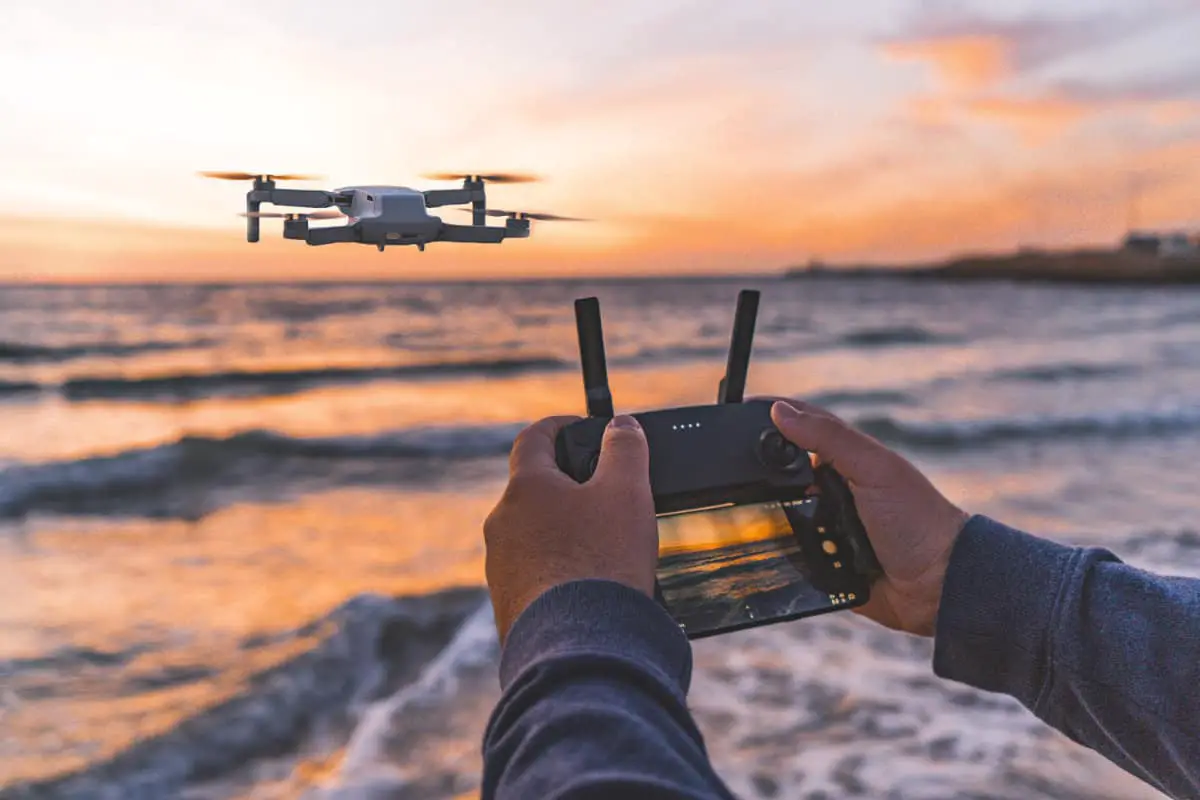
If you have a drone, then you’ll no longer need to worry about using a kayak for long-distance casting.
Your drone can help you with your long-distance casting, doing the job more quickly and efficiently than you could in a kayak. Also, if you compare the price of kayaks to the cost of drones, they are very similar.
#4 Drones Work in All Surf Conditions
Drones also work very well in all kinds of surf conditions. Generally, you can use a drone in just about any type of surf condition.
However, you won’t always be able to use a boat in any surf condition. In this instance, drones are again a more reliable and versatile option.
#5 Drones Offer Easy Transport
Another great thing about drones is that you won’t need a truck and a trailer to haul your drone along with you when you want to go to your favorite fishing spot.
Drones don’t require hauling, trailers, or anything of the sort. They are small and easy to transport compared to a boat, which requires a special vehicle and equipment to transport to your desired fishing location.
#6: Drones Fish for Tuna Better
Another great thing about drones that many tuna lovers already know is that drone fishing for tuna is quite easy and effective.
However, boat fishing for tuna can be a lot more complicated and time-consuming due to the scouting that is required.
With a drone, you’ll be able to scope out potential fishing areas quicker and without wasting time and boat fuel dragging you and your gear all over the water.
The Disadvantages of Drone Fishing
While drones offer plenty of benefits when it comes to fishing, there are, of course, some disadvantages as well.
Many of the drawbacks to drone fishing revolve around the fact that drones are expensive pieces of equipment.
Also, the rules and regulations for how you’ll be able to use your drone create further limitations and disadvantages.
We’ll discuss the issues of using a drone for fishing in a bit more detail below.
#1: Losing Your Drone
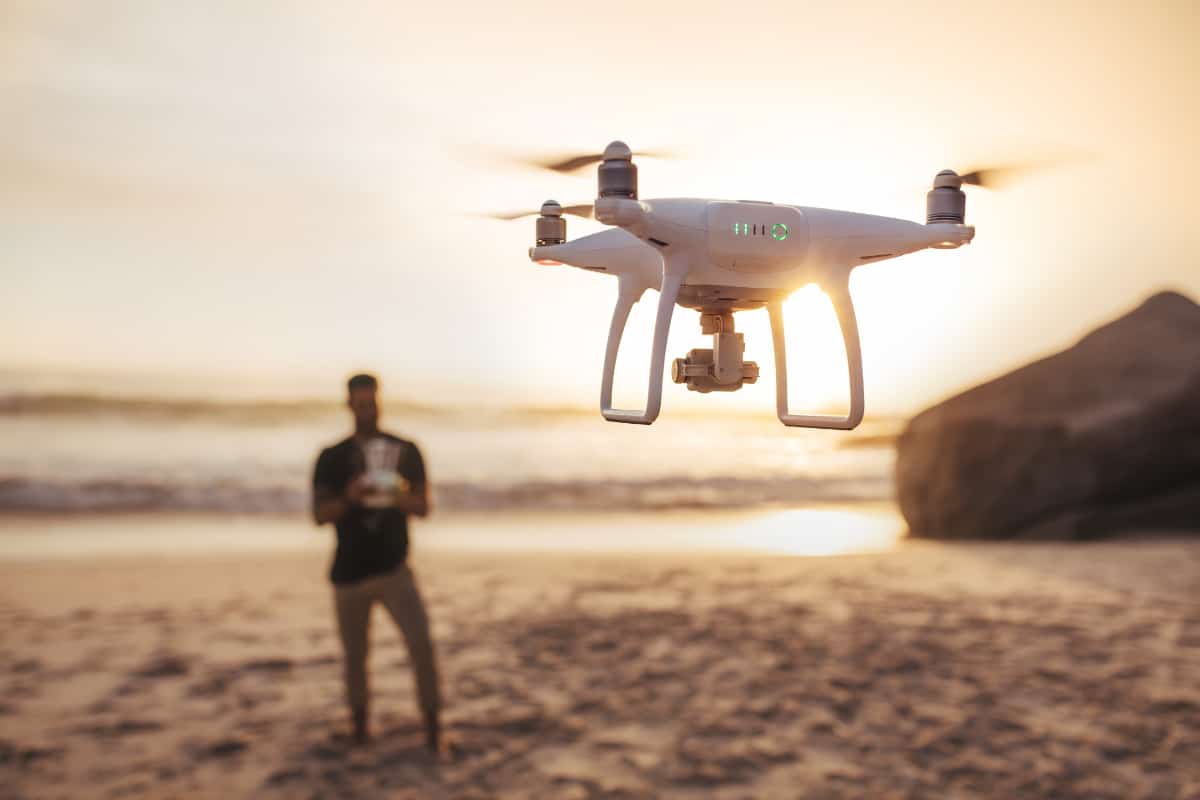
As we already mentioned, drones are expensive pieces of equipment, so they aren’t easy to replace.
When you’re not in your boat, and you are just using your drone for surf fishing, you’ll always have the potential of losing your drone for good.
Unfortunately, in some instances, anglers wind up losing their drones to the depth of the sea or in other impossible to reach locations.
#2: Drone Battery Life
Another issue when it comes to drone fishing is battery life. Typically, drones have short battery lives. When flying your drone around, you’ll need to remember that the battery won’t last over twenty minutes.
As a general rule, to prevent yourself from losing your drone due to a dead battery crash, never fly your drone for longer than twenty minutes at a time.
If you are going to be fishing with your drone, you’ll need to buy and bring along some extra batteries for the drone, depending on how long you plan to fish.
#3 Drone Fishing is Distracting
Another disadvantage of using a drone for fishing is the fact that drone fishing can wind up distracting people from their goal of catching fish.
Since drone fishing is a relatively new thing, using a drone for fishing is likely going to catch the attention of other people that are around you.
This attention can become a distraction while you are fishing and may take time away from your fishing.
#4 Drones Cannot Carry Heavy Bait
While drones offer a lot of help to anglers because they can carry bait, they don’t provide a whole lot of variety with the bait they can carry.
Drones are not able to take baits that are very large or heavy.
If you are thinking about fishing for larger fish, which require more substantial bait, then you might want to avoid using your drone.
If the bait and fish are too massive, they may exceed the carrying capacity of the drone.
In these instances, you may want to leave the drone at home, or use it solely for scouting locations.
#5 Drone Registration
If you purchase a drone that’s over 0.55 pounds, then you’ll have to register it. There is a $5 fee to register your drone. If you buy a drone that is under this weight restriction, then you won’t have to pay a registration fee.
However, most drones that are under the weight limit are not suitable for fishing because they cannot transport bait.
You’ll have to purchase a larger drone for fishing, and you’ll have to register that drone. Smaller drones just can’t fly with a fish attached.
Even with their disadvantages and limitations, drones provide a lot of benefits for anglers. If you aren’t worried too much about the cost, then a drone is a useful piece of gear to purchase for surf fishing.
Also, fishing drones provide the benefit of allowing you to observe a lot of natural beauty from higher up![]() .
.
Tips for Using a Drone While Surf Fishing
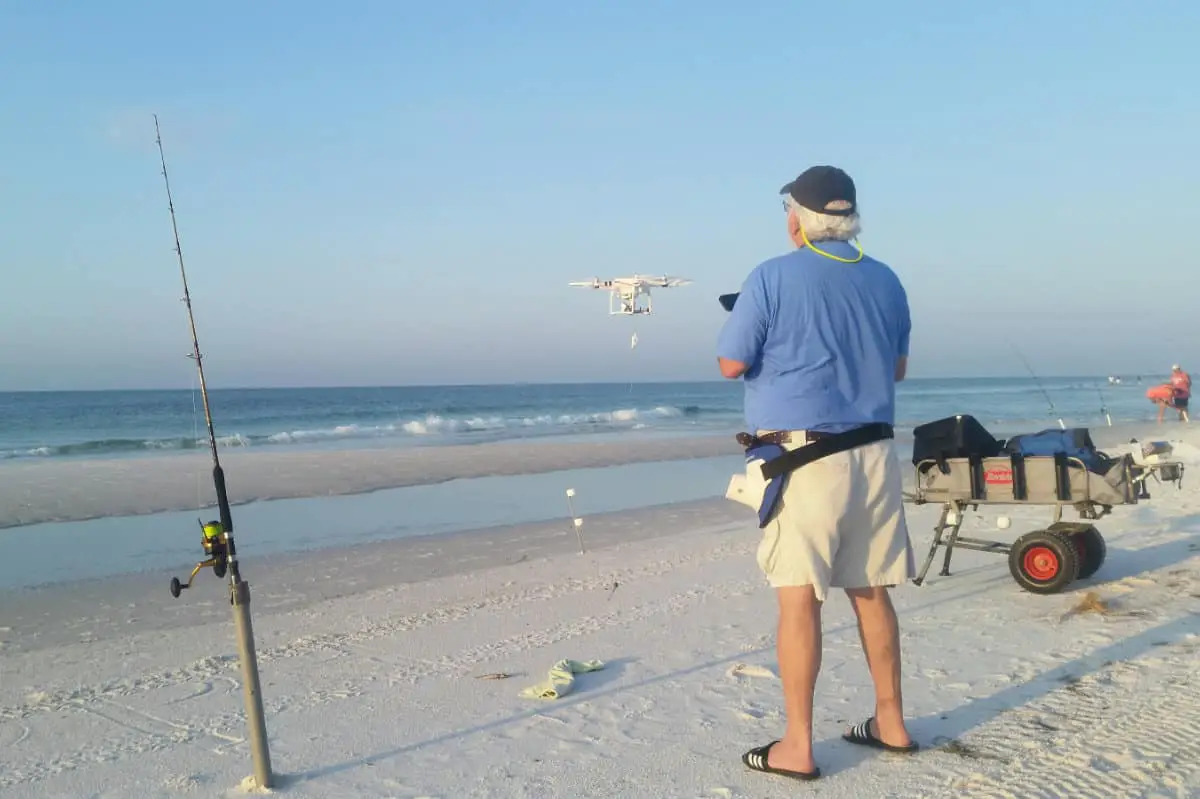

If you’re thinking of using a drone for surf fishing, then we’ve got a few tips to help you out once you get going. We’ll cover those tips for you in more detail below.
Tip #1: Bring a Spare Battery Pack
Remember, before every fishing trip you decide to take, you’ll need to bring along a substantial amount of spare batteries to keep your drone going.
Keep in mind that most types of drone batteries run out fast. Once you are out of power, then your drone just becomes extra weight to carry and will no longer be helpful.
That’s where additional battery packs for your drone will come in handy. You’ll only get about twenty minutes of run time if your drone’s battery has a full charge.
That’s equivalent to about the amount of time you’d need to cast off three or four times without a break. Most drone batteries cost about $40 to $50.
Tip #2: Get a Rod for Long Casts
You’ll also need to make sure that you’ve purchased a rod that performs well when it comes to long casts. Specifically, you want a reel with a minimum length of 500 meters.
Also, if you are surf fishing for more massive fish, then you’re likely to wind up with a very heavy spool of fishing line; you’ll have to get a sturdy rod that won’t break under the weight.
Overhead Reel and a Braided Line
Your spool will be between 30 to 50 pounds when you’ve spun it up. You may want to think about using a braided line rather than a mono spool because it will compact your reel’s overall size.
Remember that most overhead reels don’t work well when short casting. Overhead reels work great when you are long casting, and they also work great when you are casting with a drone.
So, you should think about getting a rod with an overhead reel to use as you fish with your drone. Using an overhead reel means you won’t run the risk of tangling up the line.
A tangled line is a big deal because if your line gets too tangled, your drone might wind up flying (crashing) directly into the water, which could damage or destroy your drone and as such is something you want to avoid at all costs!
One example of a fishing rod that will work great with a drone is a Shimano TLD25![]() . You can attach this type of rod to a reel that can hold 500 meters of line. Once you do that, you are prepared to hit the water.
. You can attach this type of rod to a reel that can hold 500 meters of line. Once you do that, you are prepared to hit the water.
If you’d prefer to have a line you can use in many different types of situations, then you could purchase a surfcasting reel instead. That way, you can also fish from the beach with your reel if you choose to do so.
Tip #3: Watch for Wind
You’ll also want to take precautions and keep an eye out for strong, spontaneous gusts of wind when you are using your drone.
Since drones are expensive products to purchase, you want to watch out for any risk to your equipment while you are fishing.
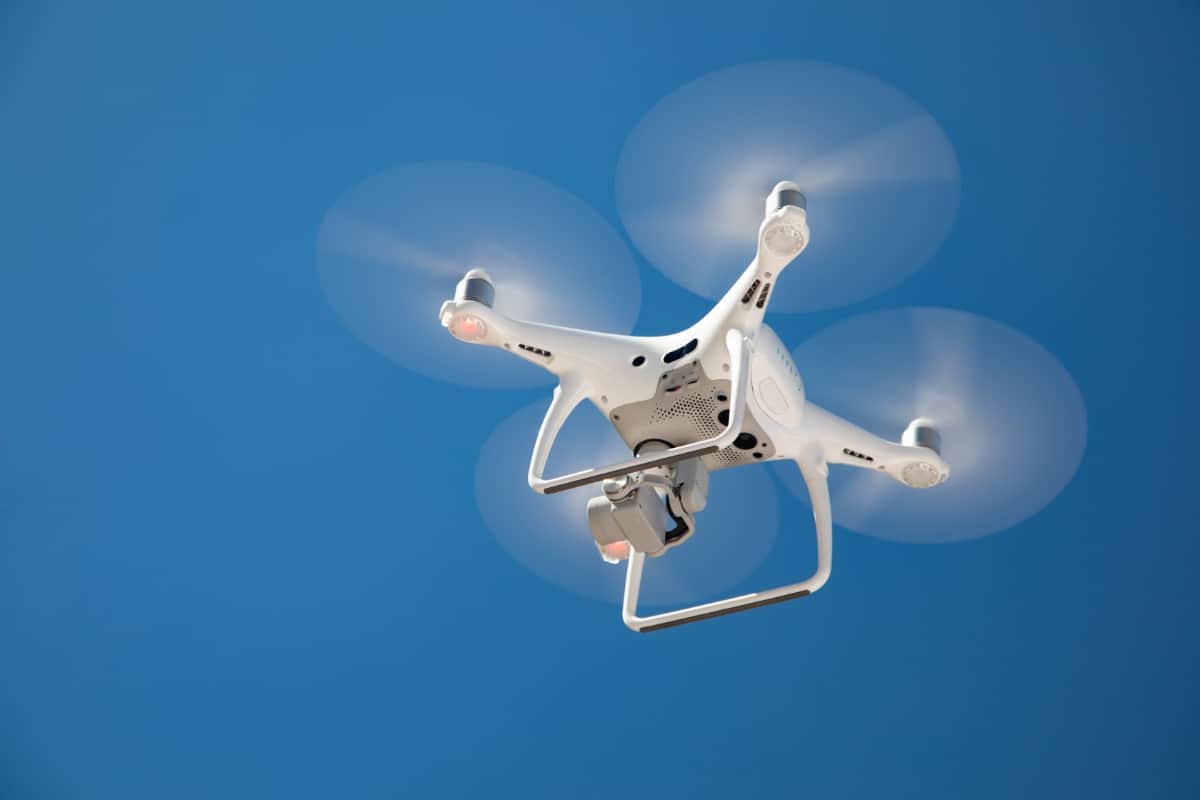
If it’s getting windy or the skies are becoming cloudy, then it’s time to stop fishing with your drone. It’s better to be safe than sorry, and you should bring it back to shore at that point.
Tip #4: How to Avoid Losing Your Drone
Since drones are such expensive pieces of equipment, the last thing you don’t want to experience is crashing or losing that drone. No matter what type of drone you purchase.
Know the Range of Your Drone
No matter what kind of drone you use, all drones can accidentally navigate outside of their range. When your drone gets too far away from your control, it can lose connection with its remote.
Since drones often fly over the open ocean, most wind up plunging right into the sea when they lose connection.
So, you’ll want to keep the range your drone has in mind when using it for fishing over the open water. Several types of drones have an operational range of about 300 yards.
The best way to ensure you know the range of your is to check the documentation that came with it, or you can also check with your drone’s manufacturer.
Attach a Line
You can also prevent the loss of your drone from a bad connection to your remote if you attach a line to your drone.
Some people even connect two lines to their drones, one featuring a hook that they can deploy to fish, and the other works as a safety line to reel back the drone in case it goes down.
You’ll need to make sure you don’t tangle these two lines as well.
With proper planning and preparation, you can avoid catastrophes or the potential loss of your drone.
It’s always a good idea to take some time out to practice flying your drone over land before you fly it over water.
You should do a few dry runs to get used to the battery and remote range. You’ll still need to be careful because you can damage your drone with a crash over land.
It’s a lot easier to retrieve a drone that falls to the ground rather than one that falls into the ocean.
Now let’s discuss some of the most common ways anglers use drones to catch fish.
Are Drones Allowed for Surf Fishing in California?
Yes, drones are allowed for surf fishing in California, but there are specific rules and regulations regarding their usage. It’s essential to familiarize yourself with the surf fishing regulations California to ensure that you are in compliance and not violating any laws while using drones for surf fishing.
How People Use Drones to Catch Fish
People use drones to catch fish in a variety of ways. The methods below can be used in any combination, but some have created more controversy than others. Below we’ll review how people use drones to catch fish.
#1 Reconnaissance
As we mentioned above, many people use drones for reconnaissance missions. Since drones have excellent cameras that allow you to scan the area below, you’ll be able to explore the body of water you’re fishing in very quickly as long as you follow your state’s regulations.
#2 Casting
Many anglers also like to use their drones to cast far away from typical fishing spots. Most people can’t cast over fifty feet, although some of the best anglers can cast up to a hundred feet.
However, 50 to 100 feet is about as far as a human arm can cast unaided. With drone assistance, you can cast about ten times the distance!
#3 Casting and Pulling
Your drone will not only help you get your hook out to where the fish are, but they can also bring your fish right back to you. However, that’s only true if smaller fish. Since drones aren’t that big themselves, they can only bring back relatively small fish.
You can’t expect to retrieve larger fish with a drone. So, if you are fishing for larger fish, using your drone for casting and pulling isn’t the best idea. However, this method works great when aiming to grab smaller fish.
Final Thoughts
Drone fishing is a relatively new phenomenon, and its growing popularity can be attributed to the number of advantages drones provide to anglers.
Drones should be considered as an additional tool to catch fish and are an excellent option instead of buying a boat.
With a drone, you’ll be able to achieve many of your fishing dreams and have several successful fishing outings.
Now that we’ve covered what drone fishing is, the advantages and disadvantages of drone fishing, how to get started with drone fishing, and how anglers use drones to surf fish.
You should have a better understanding of how you can use a drone to improve your fishing success.
You’ll need to keep in mind that purchasing a drone is a substantial investment. Some drones can cost about as much as a small boat.
If you aren’t a boat person, but you still like to fish, a drone might be an excellent option for you.
As technology continues to develop and change our world, even more, ancient sports like fishing are being approached in new, exciting, and innovative ways. So, get out on the water and start using that drone today!

